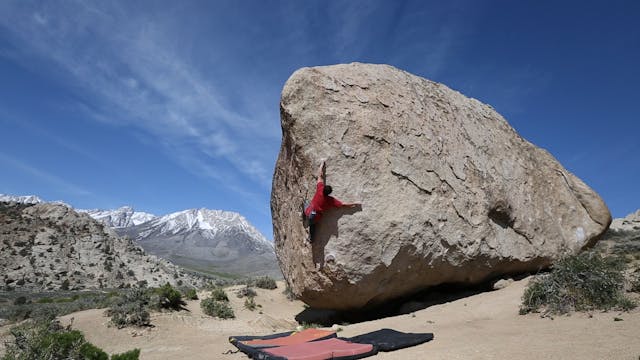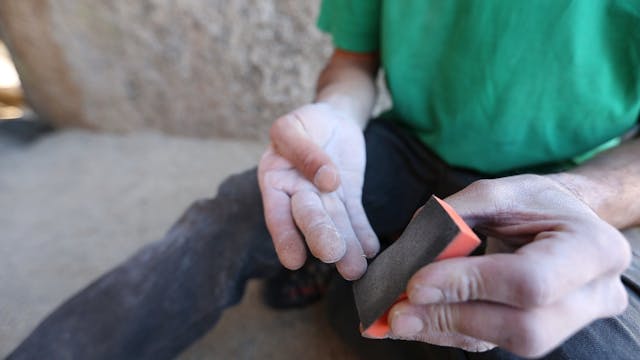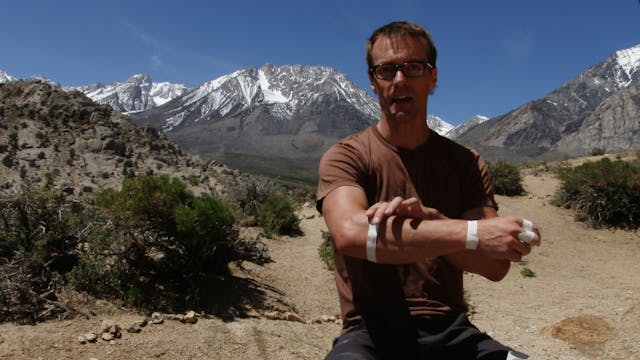Bouldering: 6. High Balls
Bouldering
•
1m 47s
A “high ball” refers to boulder problems generally above 15 or 16 feet, or with a top-out approximately 5 meters high (or higher). Another way to think of “high balls”, is an un-roped climb that is 3x your height, or taller.
Below are a few things to consider when climbing high balls:
1. Ensure you have proper crash-pad placements
2. Always have a proper spotting partner(s)
3. Be aware of the “no-fall zone”. This is a height in which the climber faces serious injury if they take a fall. This could include a twisted ankle, a broken leg, or much worse.
4. Plan long and hard before attempting highball boulders. You must be ready for full commitment, and achieve “top-out” success.
5. Gym grades and outdoor grades do not always match. If you climb at a V3-level in the gym, you are probably still not ready for an outdoor V3 boulder problems (or even V1 or V2 highballs).
6. Work you way up, through local area climbs, and perhaps rehearse your ascent on a top-rope before taking risks. That is called “head-pointing”.
Highball bouldering is extremely risky, and can even be considered “free soloing”. That stated, some climbers are exceptionally skilled at mastering this heady piece of the sport.
We hope you found this video helpful. Feel free to comment below with questions or thoughts!
Please remember, climbing is inherently dangerous. Climb at your own risk.
Up Next in Bouldering
-
Bouldering: 7. The Importance of Warm...
Like in most sports, warming up is crucial to bouldering success and injury prevention. Below are a few things to consider when warming up for bouldering:
1. Be sure to spend a good 10 minutes stretching your tendons and muscles in your legs, back, and forearms. For more on this, see our video...
-
Bouldering: 8. The Importance of Sand...
Some climbers believe that sanding your fingers is important when climbing sharp or rough rock surfaces (i.e. granite, sandstone), where your fingers might develop burrs from climbing.
Tip: Use a file, to sand off the burrs until the skin is smooth again. This helps increase positive traction ...
-
Bouldering: 9. Taping to Prevent Injury
In this video we review taping to compensate for climbing injury, or to prevent climbing injuries.
First, it’s important to consider forearm anatomy. The tendons that flex our fingers start from the tips of our fingers and extend all the way to the inside of our elbow. They are held down along...


